Imagine your furry friend’s discomfort—incessant scratching, pawing at their feet, or even limping. Could it be their nails causing them distress?
Dogs are our loyal companions, but sometimes, they need our help in maintaining their health and well-being. One aspect often overlooked is nail care.
Overgrown nails can lead to discomfort, pain, and even health issues for our furry friends. Recognizing the signs of overgrown nails is crucial for ensuring their comfort and preventing potential complications.
Contents Overview
Understanding Canine Nails
Dog nails, much like our own, require regular maintenance. They serve essential functions in gripping surfaces, providing traction, and aiding in movement.
But when left unchecked, these nails can grow too long, causing discomfort and potential health issues for your pet.
Understanding a dog’s nail anatomy is crucial to comprehend the causes and consequences of overgrown nails.
Why Nail Care Matters for Dogs
Nail care is essential for dogs for several reasons:
Comfort: Overgrown nails can cause discomfort and pain when walking or running.
Mobility: Long nails can alter a dog’s gait, affecting their mobility and balance.
Health: If left untrimmed, overgrown nails can curl back into the paw pad, leading to infections or difficulty walking.
Signs of Overgrown Nails
Recognizing the signs of overgrown nails in dogs is crucial for maintaining their comfort and well-being.
Here’s a detailed explanation of the various signs to watch out for:
1- Clicking Sound
- One of the most noticeable signs of overgrown nails is a distinct clicking sound when the dog walks on hard surfaces.
- This occurs when the extended nails make contact with the ground, creating a tapping or clicking noise.
- Pay attention to the sound of your dog’s footsteps, especially on hardwood floors or pavement.
2- Difficulty Walking
- Overgrown nails can cause discomfort and pain for dogs, particularly when putting weight on their paws.
- As a result, they may exhibit signs of difficulty walking or moving around.
- You might notice limping, favoring certain paws, or reluctance to engage in physical activities like running or jumping.
3- Visible Length
- Take a close look at your dog’s nails regularly. Healthy nails should extend just beyond the paw pad and have a slightly rounded shape.
- If the nails appear visibly long and extend significantly past the paw pad, they are likely overgrown.
- Pay attention to both the front and back paws, as nails on all four feet can grow at different rates.
4- Changes in Posture
- Overgrown nails can alter a dog’s posture and gait, leading to noticeable changes in how they stand, walk, or move.
- Your dog may adjust their posture to alleviate discomfort caused by long nails, resulting in an abnormal stance or gait.
- Watch for signs such as leaning to one side, lifting or favoring certain paws, or an awkward stride.
5- Paw Irritation
- In severe cases of overgrown nails, you may observe signs of paw irritation or inflammation. Long nails can curl back into the paw pad, causing friction, pressure, and even injury to the soft tissue.
- Check for redness, swelling, or signs of tenderness around the paw pads, as these may indicate that the nails are causing discomfort or injury.
6- Behavioral Changes
- Dogs are adept at masking pain, but prolonged discomfort from overgrown nails can lead to changes in behavior.
- Watch for subtle cues that your dog may be experiencing discomfort, such as reluctance to walk on certain surfaces, excessive licking or chewing of the paws, or irritability when their feet are touched.
- These behavioral changes may signal that your dog is in discomfort and requires attention to their nail care.
By familiarizing yourself with these signs of overgrown nails, you can take proactive steps to address any issues promptly and ensure your dog’s comfort and well-being.
Regular nail maintenance is essential for preventing overgrowth and maintaining healthy nails for your canine companion.
Causes of Overgrown Nails
Overgrown nails in dogs can occur due to various factors, ranging from genetics to lifestyle choices.
Understanding the underlying causes can help pet owners take proactive measures to prevent overgrowth and maintain their dog’s paw health.
Here are some common causes of overgrown nails in dogs:
1- Lack of Regular Trimming
- Failure to trim your dog’s nails regularly is one of the primary causes of overgrown nails.
- Without regular maintenance, nails can continue to grow unchecked, eventually extending past the paw pad.
2- Genetics
- Some dogs are genetically predisposed to faster nail growth than others.
- Breeds with fast-growing nails, such as certain terriers and hounds, may require more frequent nail trims to prevent overgrowth.
3- Inactive Lifestyle
- Dogs that lead primarily sedentary lifestyles or have limited opportunities for exercise may be more prone to overgrown nails.
- Regular physical activity on different surfaces helps naturally wear down the nails and prevent excessive growth.
4- Improper Nail Trimming Technique
- Incorrect nail trimming techniques can contribute to overgrown nails.
- Cutting the nails too short or at the wrong angle can cause pain and discomfort, leading to reluctance on the part of the owner to trim the nails regularly.
5- Fear or Anxiety During Nail Trimming
- Some dogs may exhibit fear or anxiety during nail trimming sessions, making it challenging for owners to maintain a regular trimming schedule.
- Fearful dogs may resist nail trimming or become agitated, leading to incomplete nail care and overgrowth over time.
6- Underlying Health Conditions
- Certain health conditions can affect nail growth and contribute to overgrown nails.
- Hormonal imbalances, nutritional deficiencies, and metabolic disorders can all impact nail health and growth rate. It’s essential to address any underlying health issues with the guidance of a veterinarian.
7- Environmental Factors
- Environmental factors, such as walking primarily on soft surfaces like grass or carpet, can contribute to overgrown nails.
- Dogs that do not have access to abrasive surfaces for natural nail filing may require more frequent trimming to prevent overgrowth.
8- Old Age
- As dogs age, their nail growth rate may slow down, but they may also become less active, leading to decreased natural nail wear.
- Older dogs may require more frequent nail trims to compensate for reduced activity levels and prevent overgrown nails.
Consequences of Overgrown Nails
Neglecting the care of a dog’s nails can have several significant consequences, impacting their comfort, health, and overall well-being.
Here’s an in-depth look at the potential consequences of overgrown nails:
1- Pain and Discomfort
- Long nails can cause constant discomfort and pain for dogs. As the nails grow, they can exert pressure on the sensitive paw pads, leading to a constant sensation of discomfort with every step.
- This discomfort can range from mild irritation to sharp pain, depending on the severity of the overgrowth and the dog’s tolerance level.
- Dogs may exhibit signs of discomfort such as limping, reluctance to walk or play, or vocalization when pressure is applied to the affected paws.
2- Risk of Injury
- Overgrown nails are more prone to breakage and splitting, increasing the risk of injury for dogs.
- When nails become excessively long, they can snag on surfaces or get caught in objects, leading to painful tears or fractures.
- This can cause bleeding, swelling, and even infection if left untreated. Injuries to the nails can be particularly problematic as they can expose the sensitive quick, leading to further pain and potential complications.
3- Ingrown Nails
- One of the most serious consequences of overgrown nails is the development of ingrown nails. When nails grow too long, they can curl back into the soft tissue of the paw pad, leading to ingrown nails.
- This can cause extreme discomfort, pain, and inflammation as the nail digs into the surrounding skin.
- Ingrown nails are not only painful but also increase the risk of infection as they create an entry point for bacteria.
4- Infections
- Overgrown nails can create a conducive environment for bacterial and fungal infections to thrive.
- When nails grow excessively long, they can curl back into the paw pad or create pockets of trapped debris, providing a breeding ground for harmful microorganisms.
- Bacterial or fungal infections can lead to symptoms such as redness, swelling, discharge, and odor. In severe cases, infections can spread beyond the paw area, causing systemic illness and requiring medical intervention.
5- Altered Gait and Posture
- Long nails can alter a dog’s gait and posture, leading to musculoskeletal issues and discomfort. Dogs may compensate for the discomfort caused by overgrown nails by adopting an abnormal stance or gait.
- This can put additional strain on their joints, muscles, and ligaments, leading to issues such as arthritis, tendonitis, or muscle strain over time.
- Altered gait and posture can also affect a dog’s overall mobility and quality of life, making it difficult for them to engage in normal activities.
Prevention and Treatment
Preventing overgrown nails in dogs requires a combination of regular maintenance, proper grooming techniques, and attention to overall paw health.
an in-depth explanation of how to prevent overgrown nails in your canine companion:
1- Regular Nail Trimming
- The most effective way to prevent overgrown nails is to maintain a regular nail trimming schedule. Trim your dog’s nails every 2-4 weeks, depending on their growth rate and activity level.
- Regular trimming helps keep the nails at an appropriate length, reducing the risk of overgrowth and associated complications. Use dog-specific nail clippers or grinders designed for safe and efficient nail trimming.
2- Monitor Nail Length
- Keep an eye on your dog’s nails and monitor their length regularly. Healthy nails should extend just beyond the paw pad, with a slightly rounded shape.
- If you notice that the nails are getting too long and extending significantly past the paw pad, it’s time for a trim. Be proactive about checking your dog’s nails and don’t wait until they become visibly overgrown before taking action.
3- Exercise on Different Surfaces
- Encourage your dog to engage in regular exercise on various surfaces, including pavement, grass, and gravel.
- Different surfaces can naturally wear down the nails, helping to maintain an appropriate length.
- Activities like walking, running, and playing fetch on different terrains can contribute to the natural filling of the nails, reducing the need for frequent trimming.
4- Proper Diet
- A balanced and nutritious diet is essential for supporting overall paw health, including nail growth and strength. Ensure that your dog’s diet is rich in essential nutrients such as protein, vitamins, and minerals.
- Nutritional deficiencies can affect nail health and contribute to issues like brittle or weak nails. Consult with your veterinarian to determine the best diet for your dog’s specific needs.
5- Provide Scratching Posts or Pads
- Offering scratching posts or pads can help dogs naturally file their nails and prevent overgrowth.
- Scratching surfaces provide an outlet for dogs to engage in natural grooming behavior, which includes scratching and clawing.
- Place scratching posts or pads in areas where your dog spends a lot of time, such as near their bed or favorite lounging spot.
6- Regular Paw Inspections
- Take the time to inspect your dog’s paws regularly, including the nails, paw pads, and surrounding skin.
- Look for signs of overgrowth, damage, or irritation, and address any issues promptly.
- Regular paw inspections allow you to catch potential problems early and take proactive measures to prevent overgrown nails and associated complications.
How to Trim Overgrown Nails
Learning how to trim your dog’s nails safely is essential for maintaining their overall health and well-being. If your dog’s nails are overgrown, follow these steps to trim them safely:
1- Use the Right Tools
Use dog-specific nail clippers or grinders designed for safe and efficient nail trimming.
2- Be Gentle
Hold your dog’s paw firmly but gently. Avoid squeezing or causing discomfort.
3- Safety Precautions
Ensuring safety precautions for dog nail trimming is paramount to avoid accidents and injuries.
4- Trim Conservatively
Trim small amounts of the nail at a time to avoid cutting the quick, which contains blood vessels and nerves.
5- Watch for Signs of Discomfort
Stop if your dog shows signs of discomfort, such as pulling away or whimpering. When facing handling anxiety during dog nail trimming, implementing tips can alleviate stress for both you and your pet.
6- Stop Bleeding
Knowing how to stop dog nail bleeding is crucial for promptly addressing any mishaps during the trimming process.
7- Reward and Praise
Reward your dog with treats and praise throughout the process to create a positive association with nail trimming.
To ensure a safe and stress-free experience, mastering the proper technique for dog nail trimming is essential for every pet owner.
Bottom Line
Being attuned to your dog’s needs is crucial for their overall health and well-being.
By recognizing the signs of overgrown nails and taking proactive measures to prevent and treat them, you can ensure your furry companion stays happy, healthy, and comfortable.
Stay vigilant, keep those nails trimmed, and cherish the joy of seeing your dog thrive with every step they take.

Introducing Angie Pistou, a certified Dog Groomer/Stylist trained at Sue Oliver Dog Grooming School. As a member of ICMG (International Certified Master Groomers), Angie is dedicated to excellence, currently working towards achieving Master Groomer Level 3.


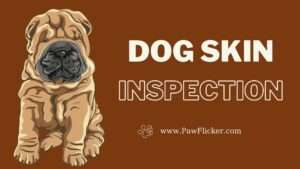

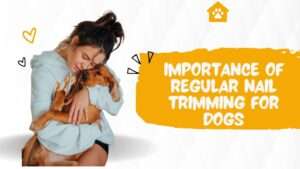
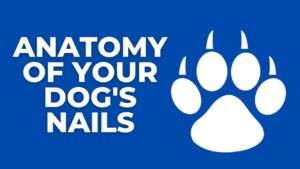

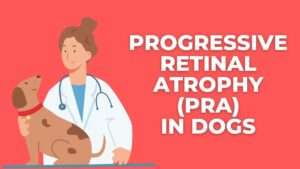
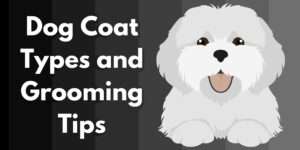
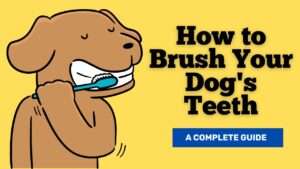
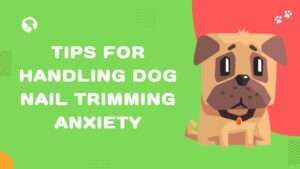
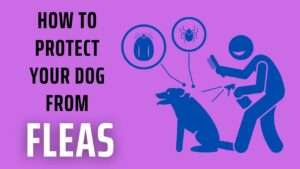
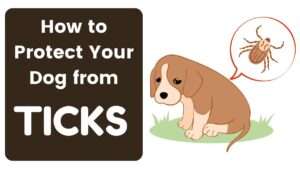



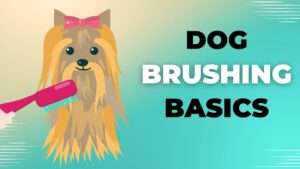
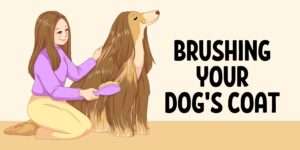
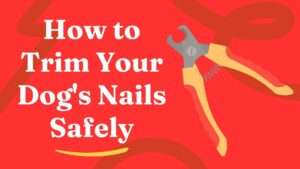
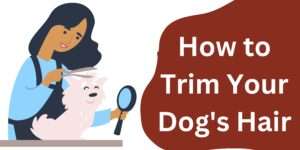









+ There are no comments
Add yours